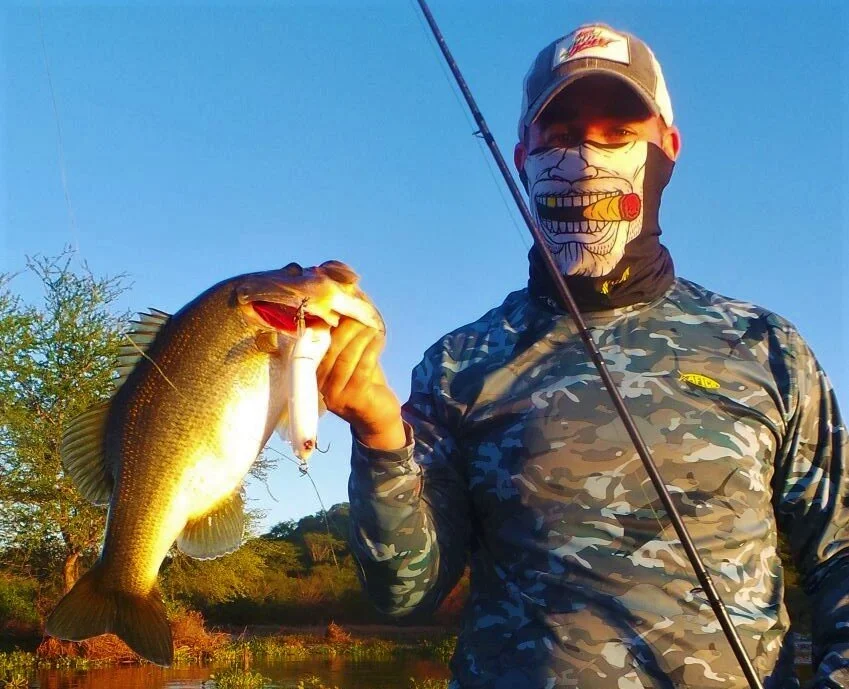Lake El Salto’s High Water Mark
Part of the reason that Mexico’s Lake El Salto remains so incredibly fertile and productive is because of its extreme water fluctuations, often up to 30 or 40 feet in a single year. The rise-and-fall revitalizes the available cover and biomass and then exposes key pieces of cover to stack fish up in predictable places. This year the full range of levels got completely condensed – it was at record lows when we were there in June, but thanks to subsequent heavy rain and a hurricane the lake is now over full pool.
One of the best structures by which to judge the changing water levels is the first island you pass when leaving the lodge, the one with the single cross on top of it. Depending on the water level, it’s usually about a mile boat ride and I’m not giving away any secrets when I describe it as one of the best fish-holding areas of the entire lake. It combines various types of rock—everything from pea gravel to softball-sized rocks to boulders to cliffs—in one small, topographically diverse area. There are gently-sloping sections and straight drop-offs, along with a current-laden channel leading into prime spawning and feeding areas.
We’ve fished it when it was partially submerged, completely submerged, and when there’s just a creek channel running down the main lake side and we’ve caught fish under all of those conditions. Any time you stop there you can expect to catch something (as long as it’s in the water). When we were there in June, there was no water anywhere on the island, not even in the channel next to it, which usually has at least a trickle. The boats were stationed on a bank just a bit beyond the cross and we had to drive to get to them.
With the recent influx of so much water, the island is now submerged, with just the cross sticking out.
The reminds me of our October 2015 trip—our friend Ray Kawabata, Hanna and I were the only people who didn’t postpone their post-hurricane trip—when the lake was over 100 percent and the water was flying over the spillway. The water had come up more gradually that time and there were lots of hyacinths that had traveled down the river. They gathered up on the peak of the island with this heron seen below.
Just four months earlier we’d been there with Ray as well as our friend Brian Thompson. The water had been what I’d describe as “mid-level” for the summer—not particularly low—and we’d caught a lot of fish with the boat tied up to the bluff side of the island casting Carolina Rigs and heavy Texas Rigs out into the channel.
On a prior trip, Ray had caught a 10-pounder and multiple nines cranking a Rapala DT10 and DT16 on the elongated point that stretches out on the side of the island facing the lodge. It’s about as textbook of a spot as you’ll ever find, combining a variety of fish-holding cover at the intersection of multiple “highways.”
But right now the water is up and I’d love to be there to run a Whopper Plopper over the top of everything.











